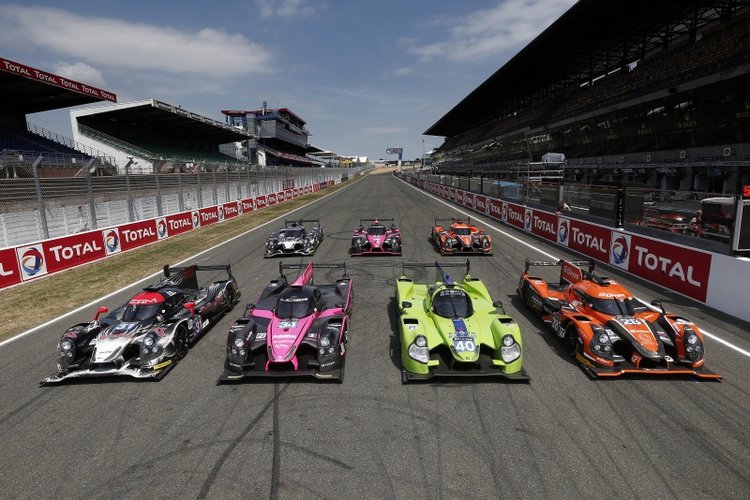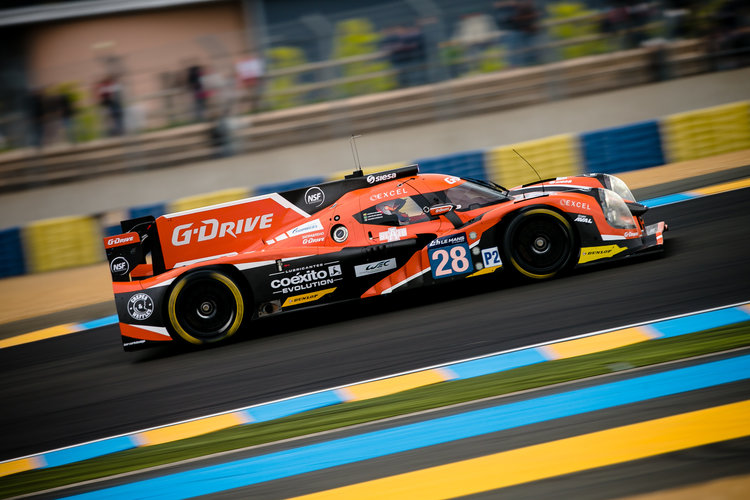The gradual unveiling of the reformed LMP2 regulations this year has been met with reluctant acceptance by the sportscar racing cognoscenti.
From 2017 onwards, only four selected chassis providers – Onroak, Oreca, Dallara and Riley/Multimatic – will be able to compete in the class, while Nissan will have an enforced monopoly over engine supply within the market. In the interests of safety, open-cockpit cars will be outlawed and replaced entirely by coupe prototypes. The rules have been adjusted slightly to befit IMSA’s plans for sportscar racing in North America, with multiple engine suppliers permitted to suit the heavy manufacturer influence, although the same chassis restriction applies.
The four chosen chassis builders are hardly disputed. Onroak Automotive already has a solid customer base in three of the four major LMP2 championships with its Ligier partnership, while Oreca is a name synonymous with the development of prototype machinery and has the only 2017-compliant car in operation: the Oreca 05. Dallara and Riley, despite being quieter than their French counterparts on the current LMP2 stage, remain powerful brands that will be trusted to produce and sell world-beating chassis of their own design.
The main source of disgruntlement from those close to sportscar racing is the ACO’s decision to reduce costs at the expense of grid diversity. There are six different LMP2 chassis manufacturers competing in the FIA World Endurance Championship, European Le Mans Series and Asian Le Mans Series this season, while three have been represented in North America. There is a consensus that sportscar fans would rather see a variety of LMP2 chassis going head to head than a restricted field of similar cars, as advocated by the 2017 rules.
But perhaps this radical regulatory adjustment is a necessary evil to secure a healthy future for the LMP2 class. If things remained as they are now, the operational costs of a complete entry would escalate to a degree that teams would eventually start turning their backs. At present, LMP2 chassis manufacturers make little money from chassis sales alone, so by narrowing the scope of the class’ chassis base, economies of scale should be achieved.

Onroak Automotive’s current reputation will make it a popular choice for customers in 2017 (Credit: Jean Michel Le Meur/DPPI)
Entering an LMP2 team is never going to be cheap – even the ‘regulated’ 2017 chassis will cost individual teams around €500,000 each – but at least there will be an element of control and stability. In effect, the whittling down of chassis manufacturers is putting a seal on the current free-flow of companies that aren’t making a viable business proposition by plunging into a pool with too many competitors and too few customers. From an economic standpoint, the current situation is not playing to anybody’s advantage: with four chassis and one engine supplier, LMP2 will at least hold onto its customer ethos, even if the diversity aspect has been punctured.
This seems like a good deal for the chosen four, but for those companies without the ACO’s blessing for the 2017 season the situation is markedly more complex. Some teams have committed to their future plans early, like British squad Strakka Racing which has already pledged to return to the LMP1 ranks in two years, while others are waiting to assess whether or not the step up to the top prototype category is a worthwhile investment.
Indeed, Strakka Racing may not be the only team planning on heading in the direction of LMP1 in the coming years. The ‘non-customer’ chassis campaigned by teams like SMP Racing (more below) and even Speedsource/Mazda in the United Sportscar Championship could herald a new wave of privateer LMP1 entries that would bring the class grid sizes back up to late-noughties levels. Although the ACO would be restricting chassis involvement in LMP2, it seems as though there is an underlying confidence among the series organisers that LMP2 will receive enough customer backing to remain healthy and relevant, while the LMP1 class will experience its own spike in entries as an added benefit.
One point to note is that several chassis manufacturers don’t want to resort to LMP3; at least not yet. While some teams, like Jota Sport, which currently campaigns a Gibson tub, have hinted at the prospect of an additional LMP3 venture, the ACO’s newest cost-effective racing category is likely to remain a testing ground for the higher formulae in the next couple of years.

Smaller companies like Gibson will have to re-evaluate their involvement in sportscar racing (Credit: Jota Sport Media)
However, in the post-2017 scenario LMP3 appears to be the only viable customer outlet for chassis providers that aren’t part of LMP2 or the big-hitting LMP1 club. This could be the primary avenue for smaller-scale prototype manufacturers like Wolf, Pilbeam and Gibson to explore in order to both achieve a reliable customer-based programme and evade the disappointment of the LMP2 regulations overhaul.
Then there are the companies that have been caught out entirely by the new rules. Tiga, a brand responsible for numerous class wins in endurance races over the years, has been forced to abandon its efforts of launching an open-cockpit LMP2 chassis after the announcement of the new rules. Although the focused development of the modified Embassy WF01 was already behind schedule (an anticipated 2014 track debut was put off), the 2017 rules have discarded any opportunity for Tiga to tap into the growing consumer market. Therefore, the new regulations act like a double-edged sword. While some chassis builders will benefit from increased business, the smaller brands will be alienated at the prospect of having a funded LMP2 project in their portfolio, but no competitions to enter it into.
Likewise, the long-term future of the BR Engineering project, which focuses on the BR01 coupe currently campaigned by SMP Racing, is also in the balance. The BR01 Nissan claimed its first podium finish at the ELMS 4 Hours of Red Bull Ring in July, but with only one year of the current regulations remaining it seems as though Boris Rotenberg’s prototype venture sadly won’t be able to fulfil its full potential, especially with the likely sway of customer interest towards the ‘big four’ as the 2017 changes come into view.
While Murphy Prototypes has already expressed interest in operating a BR01 chassis (the Irish squad currently runs an ageing Oreca 03R but has already tested a BR model), any chances of expanding this exciting project have been dealt a significant blow by the changes. This is because BR is a prime example of what the ACO does not want to promote in its LMP2 vision. With the exception of Murphy Prototypes, the BR01 is likely to be an exclusive car that will not be intended for the wider market, and as such goes against the wishes of the ACO to build commerciality before competition.

The BR01 is fast and popular, but not in the spirit of the ACO’s long term plan for the class (Credit: NISMO Global)
The future landscape of LMP2 is a nervous issue at the moment. It has not been easy for the ACO and IMSA to strike a balance between business viability, customer ethos, grid diversity and spectator satisfaction.
Few will deny that, at face value, the future shape of the category is looking less impressive than its current form. At the moment we are experiencing a glorious culmination of around 20 years of LMP2 development, with open top cars, coupes and radical chassis designs pitching together to provide some of the highest quality sportscar racing seen for years.
This golden age is something to cherish, but not something that the sportscar faithful can hold on to. Eventually the costly reality of motorsport will place LMP2 back on a tether, but it is a restriction made in the best interests of the long term success of what has become an endurance racing necessity.



